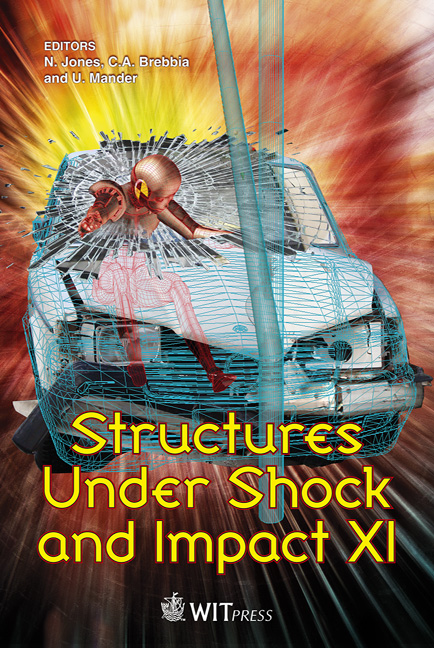Nonlinear Seismic Behaviour Of Experimentally Identified Stiffness And Damping Characteristics Of Cold Formed Steel Infill Frames
Price
Free (open access)
Transaction
Volume
113
Pages
10
Page Range
277 - 286
Published
2010
Size
1,097 kb
Paper DOI
10.2495/SU100241
Copyright
WIT Press
Author(s)
N. Bourahla, B. El-Djouzi & N. Allal
Abstract
This paper evaluates the effect of wall panels, made of cold formed steel with sheathing on both sides used as infill, on the seismic behaviour of steel frames in terms of the overall additional stiffness and damping capacity. For this purpose, a series of ambient vibration testing was first carried out on a bare steel skeleton and then on a fully finished five-storey building. Based on the global characteristics of the panels, which were identified by experimental matching, a finite element modeling was made to reproduce the behaviour of the entire structure. The numerical model of the structure was subjected to a ground acceleration time histories recorded in the region during the Boumerdes 2003 earthquake. By using this procedure, inadequacies in the FE modeling are highlighted and suggestions are made for better modelling practice for similar structures. The results obtained elucidate some aspects of the stiffening and energy dissipating capacity role of the infill panels. Keywords: cold formed steel, infill frame, earthquake response, ambient vibration, modeling technique, energy dissipation capacity. 1 Introduction Cold-formed steel members and components have been produced and widely used as structural elements for building in many places around the world for at least three decades of the century. Modern design specifications have taken substantial steps in providing design analysis methodology, but these are
Keywords
cold formed steel, infill frame, earthquake response, ambient vibration, modeling technique, energy dissipation capacity





